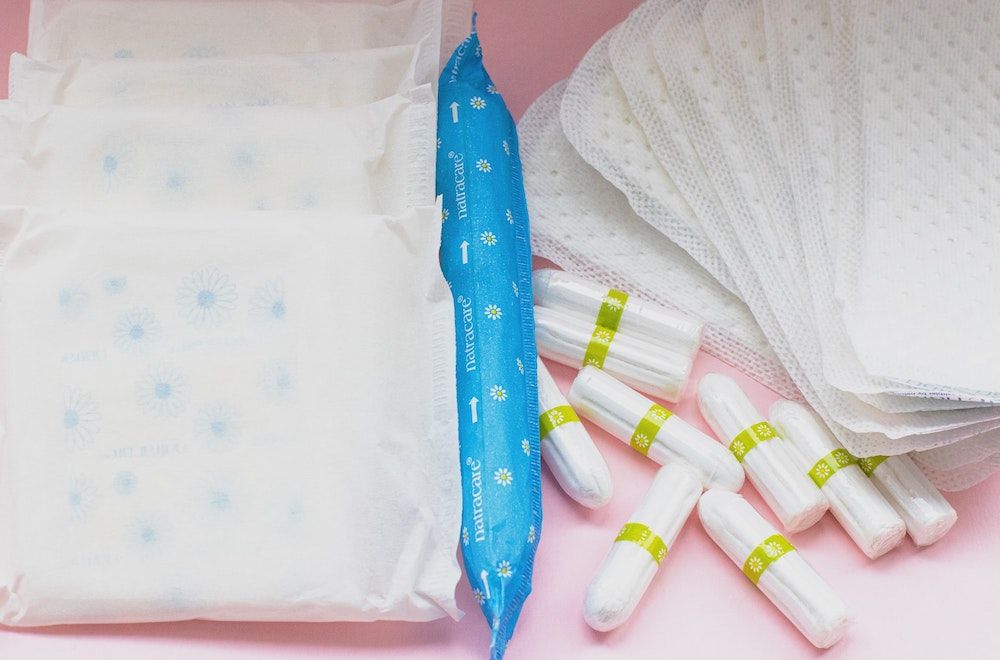Most of us could be more in-tune with our mind and body, but for those who menstruate, having a clear understanding of your monthly cycle is particularly important. Whether it’s knowing when PMS is around the corner, or pinpointing the days when you’re likely to be most productive, tracking your cycle and mood can be truly beneficial…
We all know that premenstrual syndrome (PMS) is common the week before your period, with 5–8% of people struggling with severe PMS that impacts their lives. But have you ever thought about how it changes throughout your cycle?
There are several stages that make up your menstrual cycle, which usually lasts between 21 and 40 days, and learning more about this, and the hormones involved, can be really useful in managing symptoms and feeling more connected to your body.
Understanding your cycle
It begins with your period, and the first day of bleeding is classed as day one of your cycle. At this time, your oestrogen levels are at rock bottom, so it’s understandable to feel irritable and moody. Oestrogen helps modify the effects of our feel-good endorphins and boosts serotonin, so we can feel teary and emotional when our levels drop as our periods start. As your period goes on, you might notice fatigue kick in, too; this can be due to the drop in hormones but also due to your iron levels, which may dip with your monthly bleed.

Some are lucky enough that this part of the cycle only lasts a few days, but others might notice it goes on up for up to eight days. But, once it’s stopped, we head to the second part of the cycle.
Ever have days where you feel like you can take on the world? Chances are you’re in the second week of your cycle. Here, your oestrogen is on the up, which means your feel-good hormones probably are, too. While it varies for everyone, you might notice feelings of calm and excitement.
As you reach the middle of the cycle, ovulation usually happens. This is when you hit the peak oestrogen levels, so your moods may continue to be positive, with studies showing women are more sexually active in the days leading up to ovulation. Body temperature rises slightly when ovulating too, so you might feel warmer.
Just after ovulation, our progesterone levels start to rise. This hormone is responsible for helping our body make the stress hormone cortisol, so you might notice moodiness begin to kick in, along with feeling bloated.
“Studies of women with IBS have shown that symptoms tend to be worse during the luteal phase, just after ovulation,” explains dietitian, and director of CityDietitians, Sophie Medlin. “The bowel contains receptors for the hormones oestrogen and progesterone, telling us that the bowel is designed to sense and react to them – and the luteal phase is when they peak.”
Assuming you haven’t fallen pregnant, the last part of your cycle is the week before your period, and it’s here when both your oestrogen and progesterone levels drop in anticipation. This sudden dip can cause the mood swings we associate with PMS, but this isn’t something that everyone will experience.
"Oestrogen helps modify the effects of our feel-good endorphins and boosts serotonin, so we can feel teary and emotional when our levels drop as our periods start"
Why tracking your menstrual cycle can help
Although we know the science behind our monthly cycle, naturally we’re all a little different.
“Lots of factors can have an impact on our hormones, including: sleep, the foods we eat, especially getting enough fibre and the nutrients which are building blocks for hormones; and, of course, stress,” registered nutritionist Uta Boellinger explains. “When we are stressed, our body produces stress hormones including cortisol. These take priority over other hormones. So it’s a really good idea to track your cycle to make sure you notice any changes that can indicate hormonal imbalance.”
Some of this is out of our control, but getting to know your cycle can be really helpful in pinpointing these highs and lows. It has a practical purpose, too; you can schedule in projects during the times in your cycle when you know you’re more clear-headed and productive, and arrange that pampering evening for the time you know you might feel low.
Top tips for tracking your monthly cycle
Get appy
A simple app can help you track your cycle, and receive notifications at different points in the month.
“I really like the Flo app,” explains Uta Boellinger. “Not only can you track your cycle, but also a whole host of symptoms.”
Clue is another good option for this, while Frendo is an app for those with endometriosis who want to track their periods.
Consider journaling
For more lengthy reflections, perhaps try a wellness journal that can allow you to deep dive into things such as sleep, diet, and symptoms. This can be particularly useful if you need to visit your GP to chat about your periods.
Grab a thermometer
Your temperature rises around ovulation, so using a thermometer is an alternative way to pinpoint different parts of your cycle. Some women do this alongside other checks – such as monitoring their cervical fluid – and it’s called the fertility awareness method.
“The fertility awareness method is the most precise way of charting your hormones,” explains Natasha Richardson, medical herbalist and founder of Forage Botanicals, which makes natural products for period problems like PMS and pain. “It allows you to chart your moods and any other symptoms you have alongside it, and is probably the most scientific and well-researched form of tracking for cycle and mood.”
Eat to support your cycle
The start of your cycle: During your period week, iron-rich foods such as leafy greens and lean meat, can help with feelings of fatigue. Lots of us crave sweet things during this time, and while it’s fine to indulge, you might find upping your protein intake can be more helpful.

The middle of your cycle: Uta Boellinger suggests eating ground flaxseeds during the first two weeks of your cycle, when oestrogen is lower. “Seeds can help naturally increase your oestrogen, while also providing fiber to support healthy oestrogen metabolism,” she adds.
The end of your cycle: While you don’t want to overhaul your whole diet this week, some studies have found a higher intake of fruit and vegetables seem to help with PMS symptoms. Herbalist Louise Westra suggests that herbal teas can be helpful at this time.
“Rose petal tea can be incredibly nurturing and uplifting,” Louise says. “If someone tends to suffer from a lower mood as part of the PMS picture. Fennel tea can be good for abdominal type bloating, too.”
Whether you grab a notebook, or prefer to use an app, getting started with menstrual tracking is simple to do, so why not give it a go?
Uta Boellinger is a registered nutritional therapist specialising in fertility, pregnancy, and hormonal balance. Director of Cannelle Nutrition in Brighton, Uta has just finished her debut book on teenage nutrition. To get in touch with Uta via her profile, or for more nutrition information, visit nutritionist-resource.org.uk


Comments